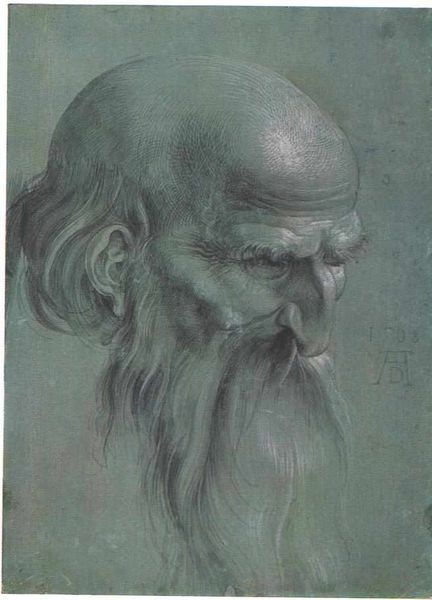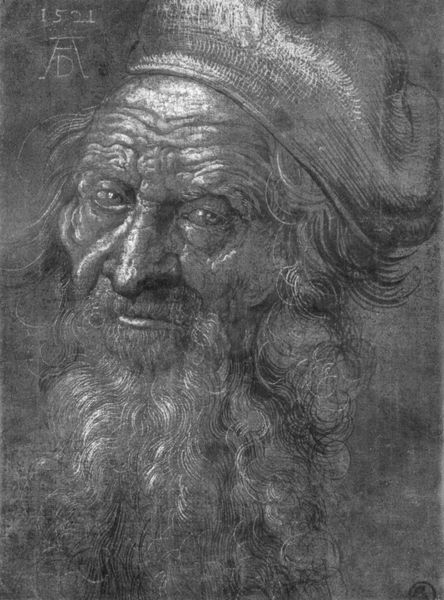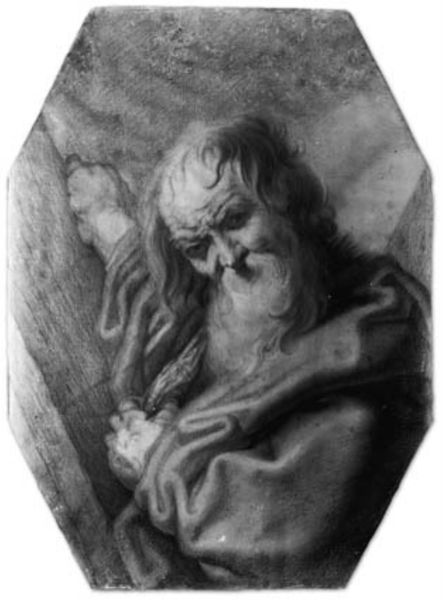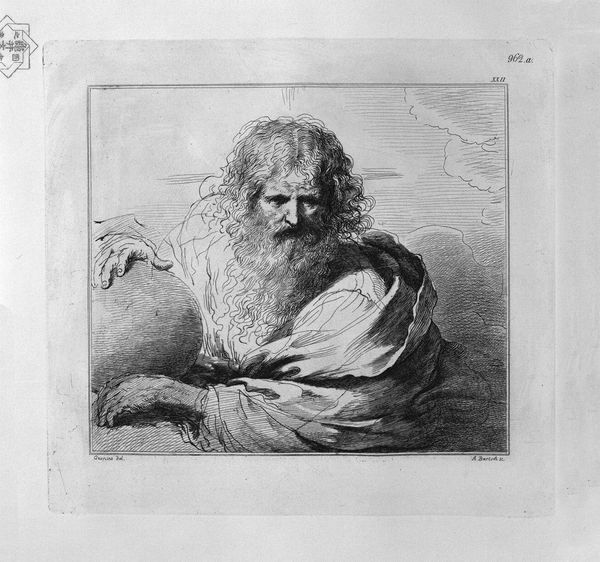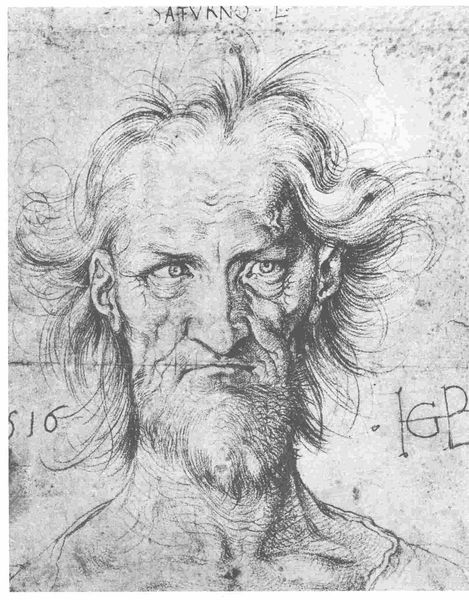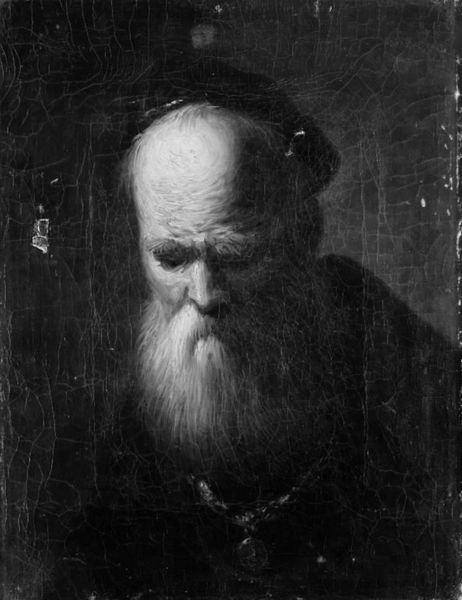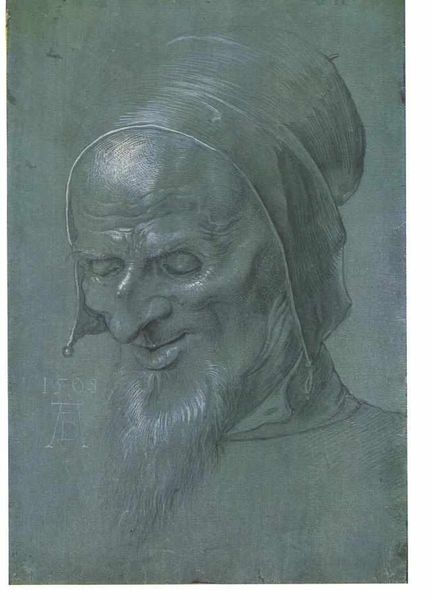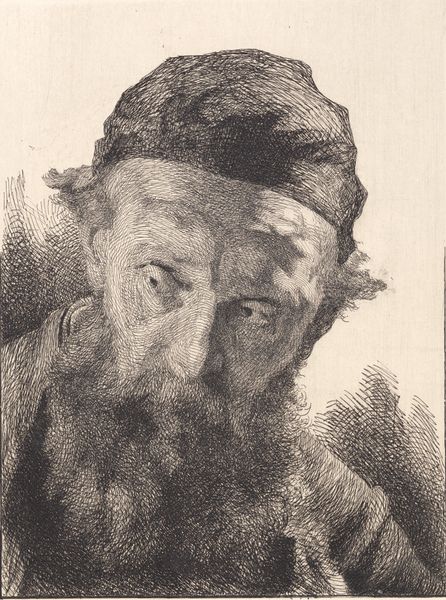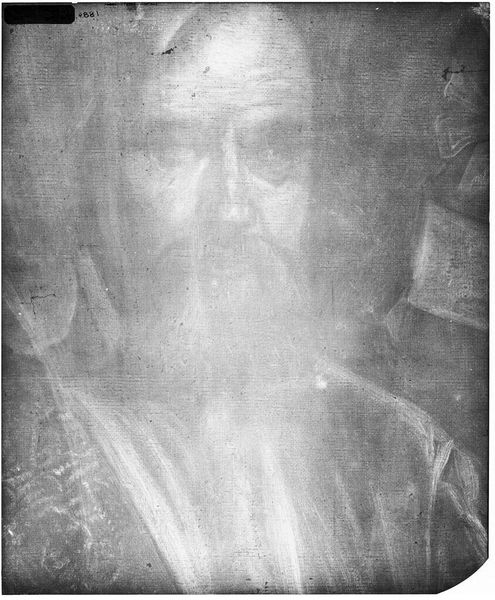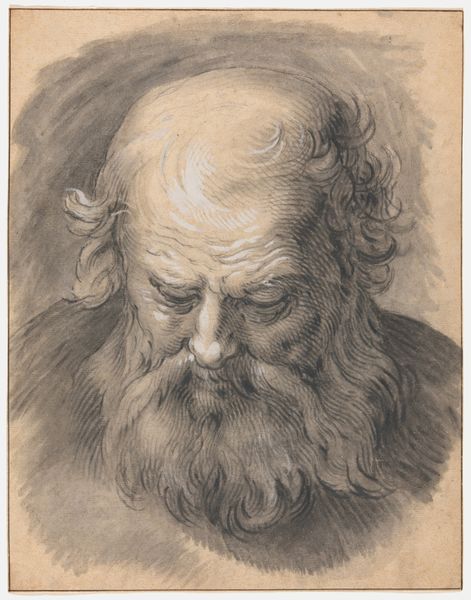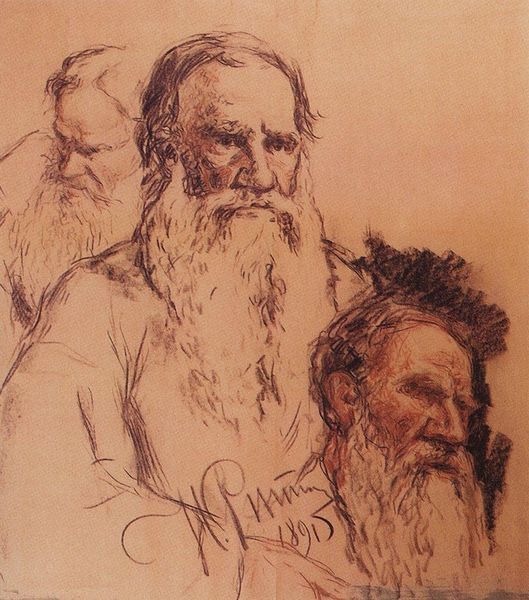
drawing, pencil, charcoal
#
portrait
#
drawing
#
self-portrait
#
portrait
#
charcoal drawing
#
11_renaissance
#
male portrait
#
sketch
#
pencil
#
portrait drawing
#
facial study
#
charcoal
#
northern-renaissance
Copyright: Public domain
Curator: This stark charcoal drawing, entitled "Head of an Apostle," was created by Albrecht Durer around 1508. It now resides at the Albertina in Vienna. My immediate reaction is of tremendous respect for the man portrayed. Editor: Yes, he carries a significant weight of, I don't know, authority and possibly sadness. The eyes, deeply shadowed, and that formidable beard certainly suggest wisdom etched by time and perhaps burden. It almost feels biblical, somehow, that intensity. Curator: Durer, especially during this period, was deeply engaged with religious themes, partly reflecting the intellectual climate of the Renaissance and, crucially, the brewing religious tensions ahead of the Reformation. I'd speculate that Durer likely conceived this drawing within the context of preparing for a larger religious work. Editor: The beard is definitely central to how the image works. Think about the archetypes: the wise old man, the prophet… It’s a signal, a deeply rooted symbol of experience and knowledge, practically screaming of authority in religious imagery. What exactly, historically speaking, did beards represent in Durer’s world? Curator: Well, beards had a complex status. Traditionally, they signified wisdom and maturity, absolutely. But social changes, particularly sumptuary laws and certain clerical expectations, meant that their prominence could vary. For an artist like Durer, navigating patronage circles, representing a figure with such a prominent beard might be making a deliberate statement about tradition or moral authority, particularly in religious circles feeling pressure for reform. It subtly critiques power structures and connects with those audiences familiar with a symbol of strength. Editor: Right, and consider the detail! The way he renders the hair—it is as if each strand holds individual meaning, adding to that aura of immense inner life. It’s a kind of visual storytelling relying entirely on culturally understood images. Curator: Durer's skill at using simple materials, pencil and charcoal, is astounding. We are witnessing a confluence of artistic skill and a society grappling with huge changes. This "Head of an Apostle" operates as both a timeless evocation of wisdom and a document of evolving European cultural values. Editor: Precisely. I find myself walking away with renewed thoughts about the enduring potency of imagery and how loaded these faces are when created by artists. Curator: And I'm left thinking about Durer’s role as an artist at a pivotal moment and how his images actively shaped how society understood power.
Comments
No comments
Be the first to comment and join the conversation on the ultimate creative platform.
